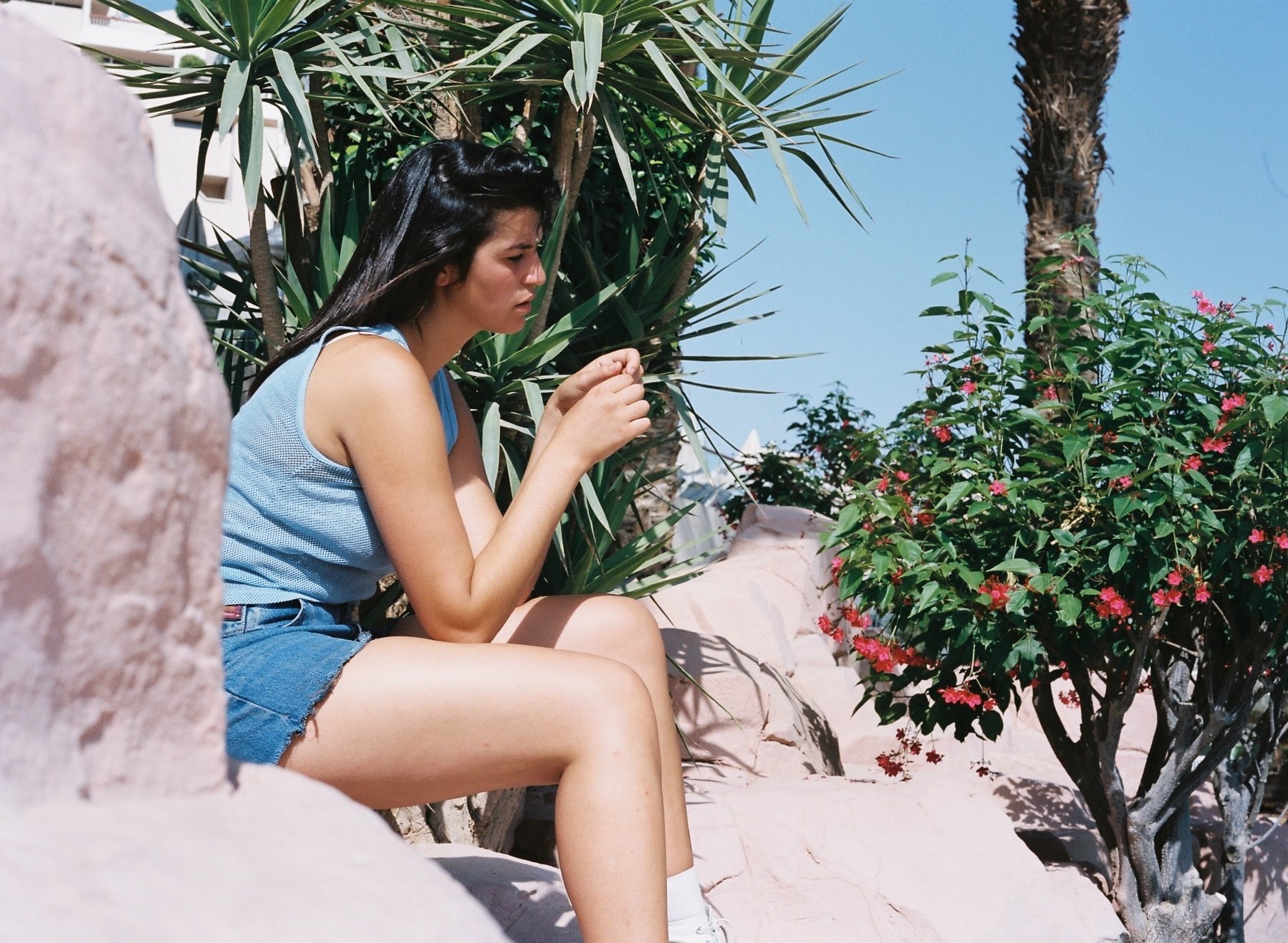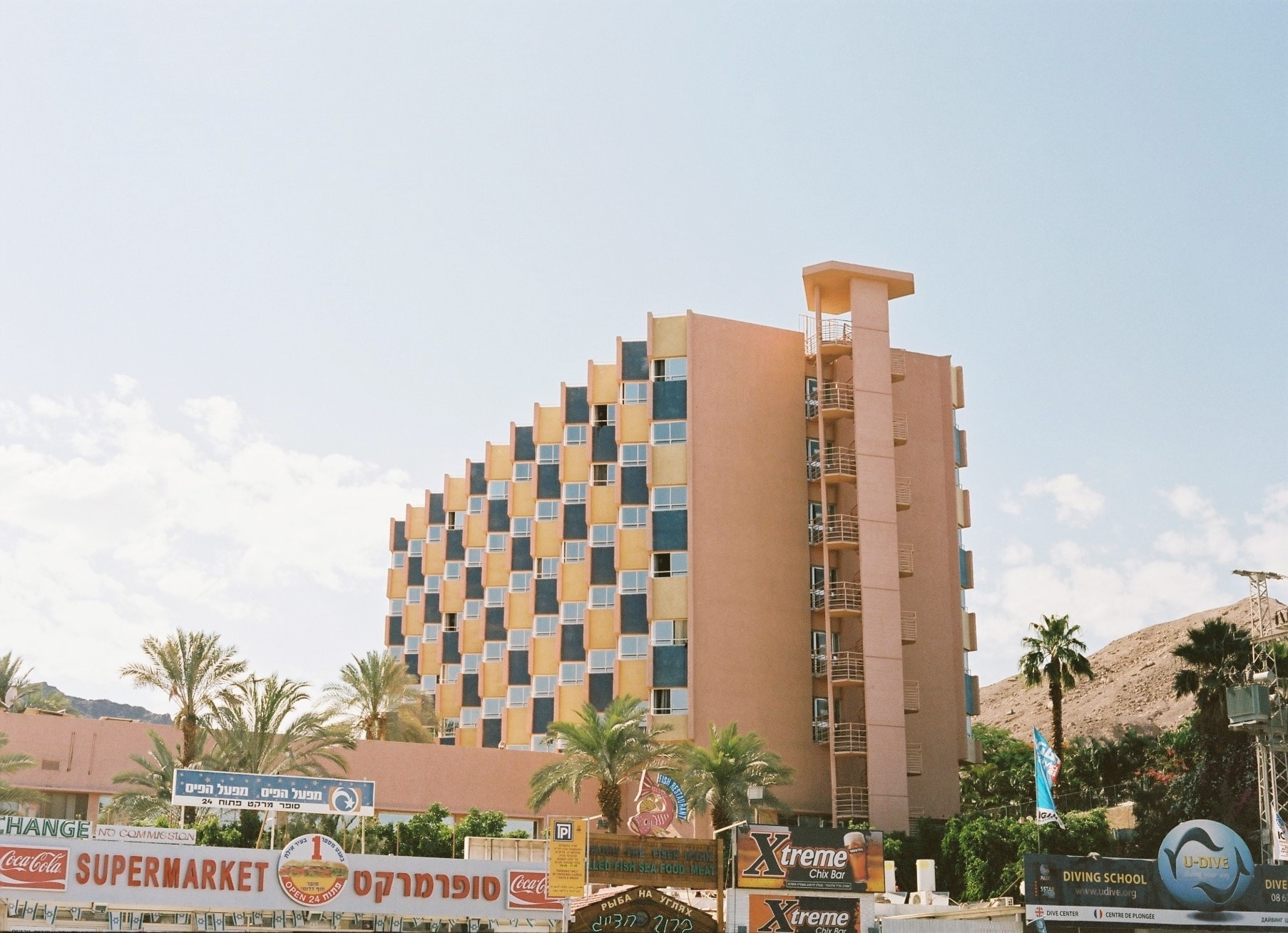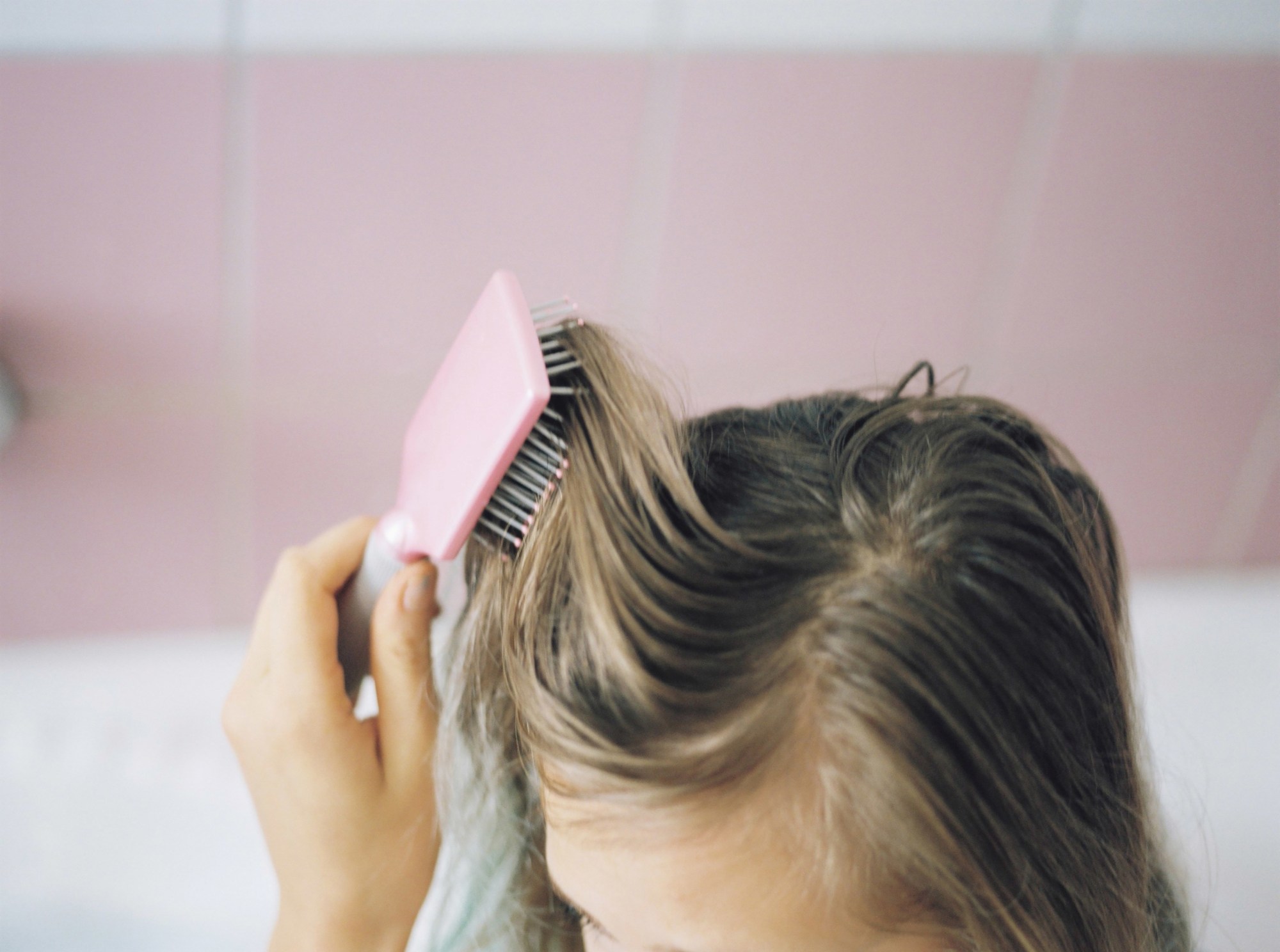In one photo, a girl’s torso shimmers in an aquamarine swimming pool, and in another, a topless woman lies in a field among the hooves of horses. These are examples of the intimate and lush photography in Dafy Hagai’s Summer zine and Israeli Girls book, two printed projects that explore girlhood in the contemporary Middle East. In her forthcoming as-yet-untitled book, which will be released by Perimeter Editions next month, Dafy continues to explore female sexuality, through neophyte models, carefree adventures and a pastel palette (or “Mariah Carey rainbow vibes,” as the artist wrote in a post on Instagram). But this new book is also an exploration of the landscape of Israel, and the result of photos taken on road trips to and from its seaside towns; nubile girls hold hands in the middle of the Negev Desert, stand on salt-covered rocks in the Dead Sea, and wander around gaudy hotels in Eilat, a resort town that borders Egypt. “There’s something fascinating about these places—from the new luxurious resorts to the touristic towns, the outskirts, and the people who live there,” explains Dafy, who also discusses her aesthetic, favorite films and feminism in the following interview.

Where did you grow up?
I grew up in a small suburb near Tel Aviv. I remember it was pretty boring and quiet, but me and my girlfriends would hang out a lot and we’d always find some fun adventures. We would hang outside a lot, try on make-up and clothes, and listen to music. We explored different styles, from being “girly,” to being “punk,” and everything in between. We were always looking for ways to express ourselves.
If you could talk to your teenage self, what would you tell her?
Be yourself, and don’t care about what anybody thinks.

When and how did you get into photography? What drew you to it?
I got into photography like 3 to 4 years ago. In college, I started working on short films and video projects, but the production was too complicated to do alone, so I started using photography for my personal work.
I grew up in a suburb of L.A., and if I didn’t look at the cover of Israeli Girls before I opened it, I would almost think that the photos were taken somewhere in California. Did you want the photos to feel placeless, as if in a dream?
The locations I scouted were intentionally very placeless, but had a certain vibe I had in mind. I wanted to create a suburban, “teenage film” aesthetic for this project, so I guess in that way, it’s meant for other people to connect to and see their own experiences in it.

What are a few of your favorite films about the teenage experience?
Kids, Nowhere, The Doom Generation, Clueless, Mean Girls, Heathers.
Do you think modern art and photography are changing the face of feminism?
I think modern art and photography, mainly on social platforms, are able to promote issues and ideas that weren’t getting enough attention, to larger audiences everywhere. It also helps build communities where female artists are able to communicate, inspire each other and collaborate.

What projects are you working on now?
I have two projects coming out real soon that I’m very excited about. The first is a collab with the Swedish shoes brand Eytys. I shot a campaign for them that is going to come out as a printed art book. They came to shoot with me in Israel and we wanted it to be about my childhood family trips. The other project I’ve been working on the last couple of months is a new book. It’s supposed to come out in September by Perimeter Editions. It’s a book about beach girls and beach towns in Israel.

What is the concept for this book and what do you want to show with it? With Israeli Girls, I know you wanted to show youth culture and sexuality in Israel, so is this project a continuation of that?
It’s mainly about the aesthetic I became interested in lately and the nostalgia of beach towns in Israel, which I traveled to in different periods of my life. There’s something fascinating about the whole aesthetic of these places—from the new luxurious resorts to the history of these touristic towns, the outskirts, and the people who live there. Though these places changed a lot over the years, a few of the vintage hotels still exist there, so it’s really cool to see. I was in Vegas earlier this year, and the vintage motels really fascinated me. I love that you can feel a certain time through architecture, and imagine what used to go on there back in the day. I also did some night shoots, which is something new to me. I guess it’s a continuation of exploring female sexuality, but also of different places and styles in Israel. With both books, I treat it as if I was directing a film, or creating a world.



Credits
Text Zio Baritaux
All photographs courtesy Dafy Hagai
